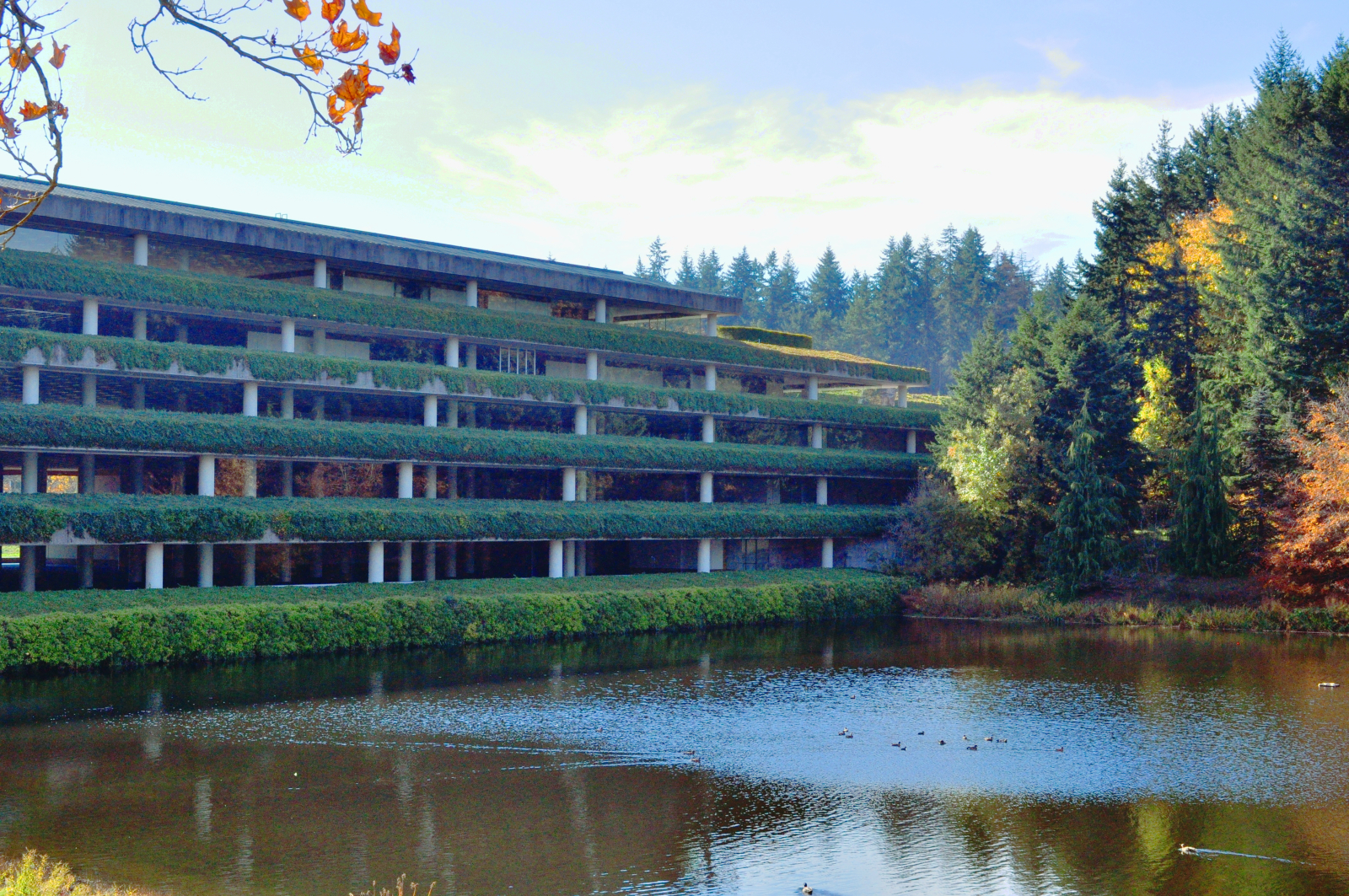The Modernist corporate campus movement that emerged in post-war America brought together some of the world’s most renowned designers, who sought to create serene settings that would attract well-educated, sophisticated employees accustomed to the idyllic settings of their former academic institutions and their evolving suburban lifestyles.
Among the notable landscape architects was Hideo Sasaki, whose philosophy emphasized the equal partnership of architects and landscape architects in the design process. His Modern landscapes focused on seamlessly integrating buildings with their natural environments and conceptualized landscapes as restorative havens for the human spirit, resulting in spaces that harmonized with nature and encouraged human interaction.
Sasaki became a sought-after design collaborator for prominent Modernist architects such as Bruce Graham, Eero Saarinen, Pietro Belluschi, and Ralph Rapson. The campuses also showcased furnishings from iconic designers like Ray and Charles Eames, Florence Knoll, George Nelson, Harry Bertoia, and Alexander Girard, whose timeless classics had a remarkable impact on the development of the corporate design world.
This presentation will explore how Hideo Sasaki's perspective as a landscape architect helped to shape this Modernist aesthetic. It will also highlight Miller Knoll's most important products and stories, illustrating the importance of honoring our past while embracing the future.
These Modernist corporate campuses are now endangered by our post-pandemic world. Liz Waytkus, Executive Director of Docomomo US, will lead a conversation with James Miner, former CEO of Sasaki, and Amy Auscherman, Director of Global Archives and Brand Heritage at Miller Knoll, as they examine several landmark projects within the modernist corporate campus movement of the 1960s.
